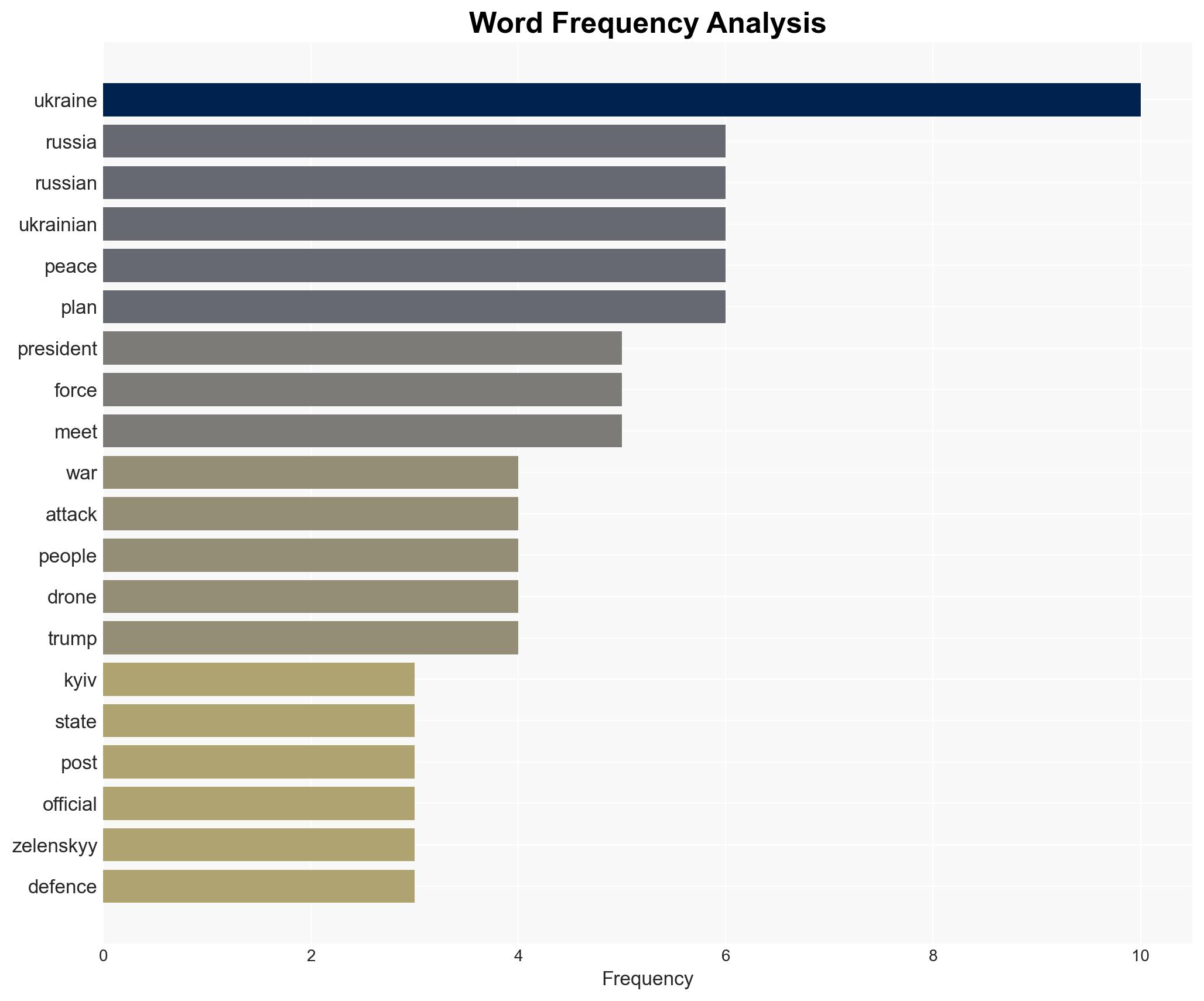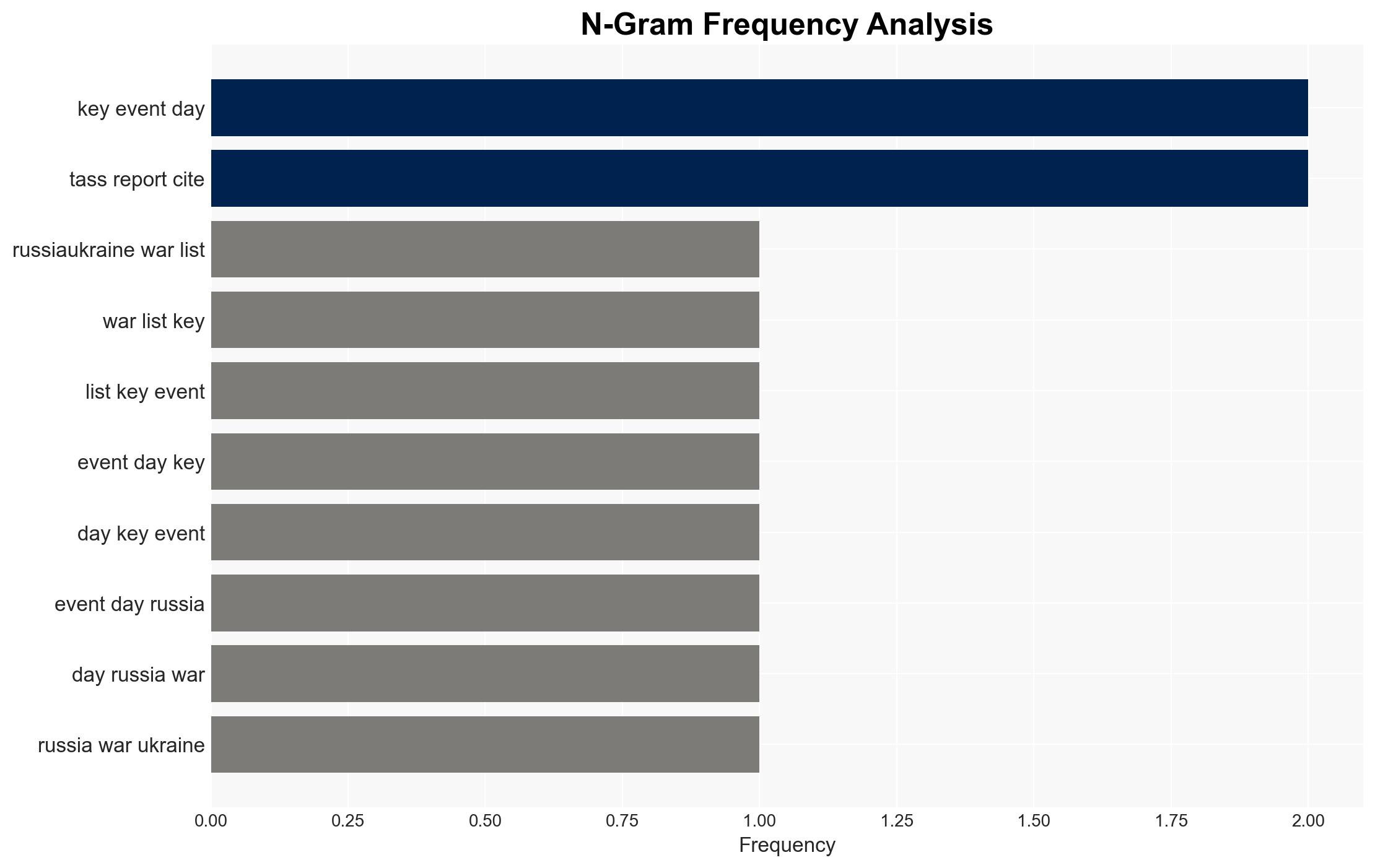Key Developments in Russia-Ukraine Conflict on Day 1371: Strikes on Kyiv and Regional Attacks Reported
Published on: 2025-11-26
AI-powered OSINT brief from verified open sources. Automated NLP signal extraction with human verification. See our Methodology and Why WorldWideWatchers.
“`html
Intelligence Report:
1. BLUF (Bottom Line Up Front)
With a moderate confidence level, the most supported hypothesis is that the ongoing military engagements and diplomatic efforts are indicative of a protracted conflict with intermittent negotiations. Recommended action includes bolstering diplomatic channels and preparing for sustained military and economic support to Ukraine.
2. Competing Hypotheses
Hypothesis 1: The current military escalations and diplomatic activities are part of a strategic maneuver by Russia to gain leverage in negotiations, potentially leading to a temporary ceasefire or peace agreement.
Hypothesis 2: The conflict is likely to continue with periodic escalations and negotiations, as neither side is willing to make significant concessions, leading to a prolonged stalemate.
The second hypothesis is more likely due to the entrenched positions of both parties and the complexity of the issues at stake, such as territorial integrity and security guarantees.
3. Key Assumptions and Red Flags
Assumptions include the belief that both Russia and Ukraine are acting in good faith during negotiations, and that international actors like the US and EU are committed to a peaceful resolution. Red flags include the potential for misinformation or propaganda from state-controlled media and the possibility of hidden agendas in diplomatic communications.
4. Implications and Strategic Risks
The continuation of the conflict poses risks of further regional destabilization, increased refugee flows, and economic strain on European countries. There is also a risk of cyber attacks and misinformation campaigns targeting both domestic and international audiences. Escalation could lead to broader geopolitical tensions, particularly involving NATO and Russia.
5. Recommendations and Outlook
- Enhance diplomatic engagement with both Russia and Ukraine to facilitate dialogue and reduce hostilities.
- Increase support for Ukraine in terms of military aid and economic assistance to strengthen its negotiating position.
- Monitor and counter misinformation and cyber threats that could exacerbate tensions.
- Best-case scenario: A negotiated settlement that respects Ukraine’s sovereignty and provides security guarantees.
- Worst-case scenario: Full-scale military escalation involving NATO forces.
- Most-likely scenario: Continued conflict with periodic negotiations and temporary ceasefires.
6. Key Individuals and Entities
Volodymyr Zelenskyy, Vladimir Putin, Donald Trump, Andriy Yermak, Dan Driscoll, Yevgeny Balitsky, Ihor Zhovkva.
7. Thematic Tags
Regional Focus, Regional Focus: Eastern Europe, Russia, Ukraine
“`
Structured Analytic Techniques Applied
- Causal Layered Analysis (CLA): Analyze events across surface happenings, systems, worldviews, and myths.
- Cross-Impact Simulation: Model ripple effects across neighboring states, conflicts, or economic dependencies.
- Scenario Generation: Explore divergent futures under varying assumptions to identify plausible paths.
Explore more:
Regional Focus Briefs ·
Daily Summary ·
Support us





